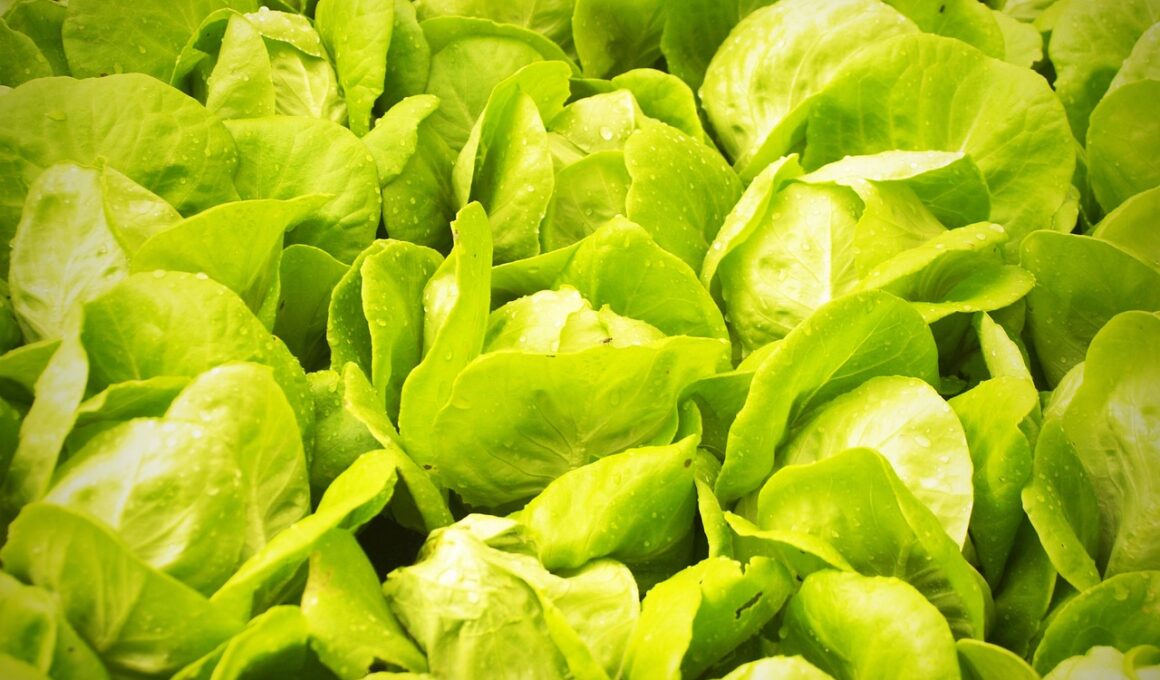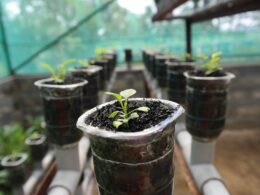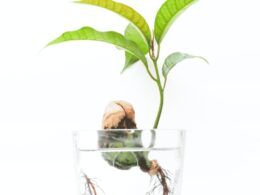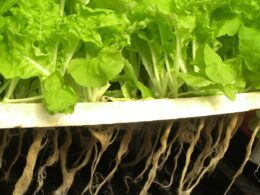Are you interested in hydroponics, but wary of using complicated nutrient solutions? Well, the good news is that you can do hydroponics with just water!
Hydroponics is a method of growing plants without soil, using a nutrient solution instead. This allows for more efficient use of resources and can lead to higher yields.
But what if you don’t want to deal with mixing and measuring out a nutrient solution? Using just water in your hydroponic system is a simple and affordable alternative.
While it may not provide all the necessary nutrients for your plants, there are ways to supplement and maintain their growth. In this article, we’ll guide you through the process of setting up a hydroponic system with just water and provide tips for success.
Introduction to Hydroponics
Get ready to explore a world of innovative gardening as we dive into the exciting world of hydroponics! Hydroponics is a method of growing plants without soil, using only water, nutrients, and a growing medium. This technique has been around for centuries, but it’s gained popularity in recent years due to its numerous benefits.
One of the benefits of hydroponics is that plants grow faster and healthier than in traditional soil-based gardening. This is because the nutrients are delivered directly to the roots, allowing the plants to absorb them more efficiently. Additionally, hydroponics uses less water than traditional gardening, making it an eco-friendly option.
However, there are some common mistakes that beginners make when starting with hydroponics. One of the biggest mistakes is not monitoring the pH levels of the water. If the pH levels are too high or too low, it can cause nutrient deficiencies in the plants and affect their growth.
Another mistake is over or underfeeding the plants, which can also lead to stunted growth or even death.
Incorporating hydroponics into your gardening routine can be a fun and rewarding experience. By avoiding common mistakes and providing your plants with the right nutrients, you can achieve impressive results and enjoy a bountiful harvest. So why not give it a try and see what this innovative gardening technique has to offer?
Understanding the Nutrient Solution
To truly thrive, your hydroponic plants require a carefully balanced nutrient solution that provides all the necessary minerals and nutrients for robust growth. This solution is the key to a successful hydroponic system, and without it, your plants won’t be able to reach their full potential.
The benefits of using a nutrient solution are numerous, including faster growth rates, higher yields, and healthier plants overall.
One important factor to consider when using a nutrient solution is pH management. pH is a measure of how acidic or alkaline a solution is, and it can have a big impact on plant growth. In hydroponics, the optimal pH range for most plants is between 5.5 and 6.5. If the pH is too high or too low, it can cause nutrient deficiencies and other problems.
To ensure that your plants are getting the nutrients they need, it’s important to regularly test and adjust the pH of your nutrient solution.
In summary, the nutrient solution is a crucial component of any hydroponic system. It provides the necessary minerals and nutrients for your plants to thrive and offers numerous benefits, including faster growth rates and higher yields. Additionally, pH management is essential to ensure that your plants are getting the nutrients they need. By carefully monitoring and adjusting the nutrient solution, you can create a healthy and productive hydroponic garden.
At What Temperature Should I Stop Doing Hydroponics?
The temperature limitations of hydroponics play a crucial role in successful cultivation. Typically, most hydroponic systems thrive between 65-80°F (18-27°C). However, when temperature surpasses 85°F (29°C), nutrient uptake can be hindered, resulting in stunted growth. Conversely, colder temperatures below 50°F (10°C) can slow down metabolism, affecting plant health. Monitoring and maintaining an optimal temperature range is vital for maximizing hydroponic yields.
Plant Selection and Maintenance
Maintaining healthy plants in your hydroponic system requires careful selection and regular maintenance. Ensure that each plant receives the necessary attention and care to thrive. When selecting plant varieties, consider their growth habits and preferred growing conditions. Some plants, such as lettuce and herbs, thrive in hydroponic systems, while others, such as fruiting plants like tomatoes and peppers, may require more advanced techniques.
Watering techniques are also crucial for plant maintenance in hydroponics. Overwatering can lead to root rot, while underwatering can cause stunted growth or even death of the plant. It’s important to monitor the nutrient solution levels and adjust accordingly. Additionally, some hydroponic systems, such as aeroponic or deep water culture, require more frequent watering than others.
Regular maintenance of your hydroponic system is essential for healthy plant growth. This includes checking pH and nutrient levels, pruning and trimming plants, and keeping the system clean and free of debris. By carefully selecting plant varieties, using proper watering techniques, and maintaining your system regularly, you can ensure that your hydroponic garden thrives and produces healthy, nutrient-rich crops.
Setting Up a Hydroponic System with Just Water
If you’re looking for a low-maintenance and budget-friendly way to start your hydroponic journey, setting up a system with just water can be a great option. However, the quality of the water you use is crucial for the health of your plants. Make sure to use clean, filtered water free from contaminants and chemicals. You can also test the pH level of your water to ensure it’s within the ideal range for your plants.
When it comes to container options, you have a few choices. You can use a simple glass jar or a plastic container with a lid. Mason jars are also a popular option. Just remember that the container should be able to hold enough water to cover the roots of your plants.
You can also add some nutrients to the water to give your plants a boost, but this is not necessary for a basic water-only system.
Setting up a hydroponic system with just water can be a simple and effective way to grow plants. By monitoring the water quality and choosing the right container, you can create a healthy environment for your plants to thrive in. Plus, with minimal maintenance required, you can enjoy the benefits of hydroponics without a lot of effort or expense.
Tips for Success with Water-based Hydroponics
Ready to take your hydroponic skills to the next level? Boost your success with water-based hydroponics by following these helpful tips.
First and foremost, water quality is crucial when it comes to hydroponics. Ensure that you’re using clean and filtered water to avoid any contamination that may harm your plants. It’s also important to constantly monitor the pH balance of your water to ensure that it stays within the optimal range for your plants to thrive.
Another tip for success with water-based hydroponics is to provide proper aeration for your plants. Oxygen is essential for plant growth and development, and without proper aeration, your plants may suffocate and die. You can achieve adequate aeration by using an air pump and air stones in your hydroponic system. This will also help prevent the growth of harmful bacteria in your water.
Lastly, ensure that your plants are getting the right nutrients they need to thrive. While water-based hydroponics may seem simple, it’s important to provide your plants with the necessary nutrients to grow and produce healthy yields. You can achieve this by regularly adding nutrient solutions to your water, following the recommended guidelines for your specific plants.
Remember, success with water-based hydroponics relies heavily on maintaining water quality, pH balance, providing proper aeration, and ensuring your plants receive the necessary nutrients. By following these tips, you can take your hydroponic skills to new heights and produce healthy and thriving plants.
Frequently Asked Questions
How much water is required for a hydroponic system with just water?
When it comes to water-based hydroponics, the water requirements for your system depend on the size of your setup and the types of plants you’re growing. Typically, you’ll need to provide enough water to keep your roots submerged and hydrated, without drowning them.
Additionally, nutrient solutions will need to be added to the water to provide your plants with the necessary nutrients for growth. It’s important to monitor your water levels regularly, as well as the pH and nutrient levels, to ensure your plants are thriving.
By paying attention to these factors, you can create a successful hydroponic system that uses just water and nutrient solutions to grow healthy plants.
What are the benefits of using just water for hydroponics?
Using just water for hydroponics can have numerous benefits. It’s more environmentally friendly as it eliminates the need for soil, requiring less water and contributing less to soil erosion. Additionally, it’s cost-effective with lower maintenance and equipment costs than traditional farming methods. Hydroponic plants grown in water also tend to absorb nutrients more efficiently, resulting in healthier and more robust growth. Overall, utilizing just water for hydroponics is an attractive option for those looking to reduce their environmental impact while improving crop yields.
Can you grow all types of plants using just water in hydroponics?
When it comes to hydroponics and using just water, plant compatibility is key. Not all plants thrive in a hydroponic setup with just water. While some plants, like lettuce and herbs, can do well with just water, others require additional nutrients to grow properly.
This is where nutrient supplementation comes in. By adding specific nutrients to the water, you can ensure that your plants have everything they need to grow healthy and strong. However, it’s important to research the specific needs of the plants you want to grow before starting a hydroponic setup with just water.
With the right preparation and care, you can successfully grow a variety of plants using just water in hydroponics.
How often should the water be changed in a water-based hydroponic system?
To maintain optimal plant growth and health in a water-based hydroponic system, it’s important to change the water regularly. As a general rule of thumb, it’s recommended to change the water every 2-3 weeks.
This helps to ensure that the water quality remains high and that your plants have access to the necessary nutrients they need to thrive. In addition to changing the water, it’s also important to monitor water quality and supplement with nutrients as needed.
By taking these simple steps, you can ensure that your hydroponic plants are healthy and thriving.
Is it possible to use tap water for a water-based hydroponic system?
Using tap water for a water-based hydroponic system is possible, but it’s important to be aware of potential tap water contaminants that can harm your plants.
Alternative water sources for hydroponics include distilled or reverse osmosis water, which are free from these contaminants.
If you do choose to use tap water, make sure to test it first and consider using a filtration system to remove any harmful chemicals or minerals.
Ultimately, the water you use in your hydroponic system plays a crucial role in the health and growth of your plants, so it’s important to choose wisely.
Conclusion
So, can you do hydroponics with just water? The answer is yes, but it requires some careful planning and attention to detail. Hydroponics is a great way to grow plants without soil, using nutrient-rich water instead.
This method allows for faster growth, higher yields, and more control over the plant’s environment. To set up a hydroponic system with just water, you’ll need to carefully select your plants and maintain them properly. You’ll also need to choose the right nutrient solution and make sure it’s properly balanced for your plants.
Setting up the system itself can be a bit tricky, but with some practice, you’ll be able to create a thriving hydroponic garden with just water. In conclusion, hydroponics with just water is definitely possible, but it requires some effort and attention to detail.
With the right plant selection, nutrient solution, and set up, you can enjoy the benefits of hydroponics without any soil. Just remember to maintain your system properly and stay on top of any issues that may arise. With a little patience and practice, you’ll soon be growing healthy, thriving plants with ease.









